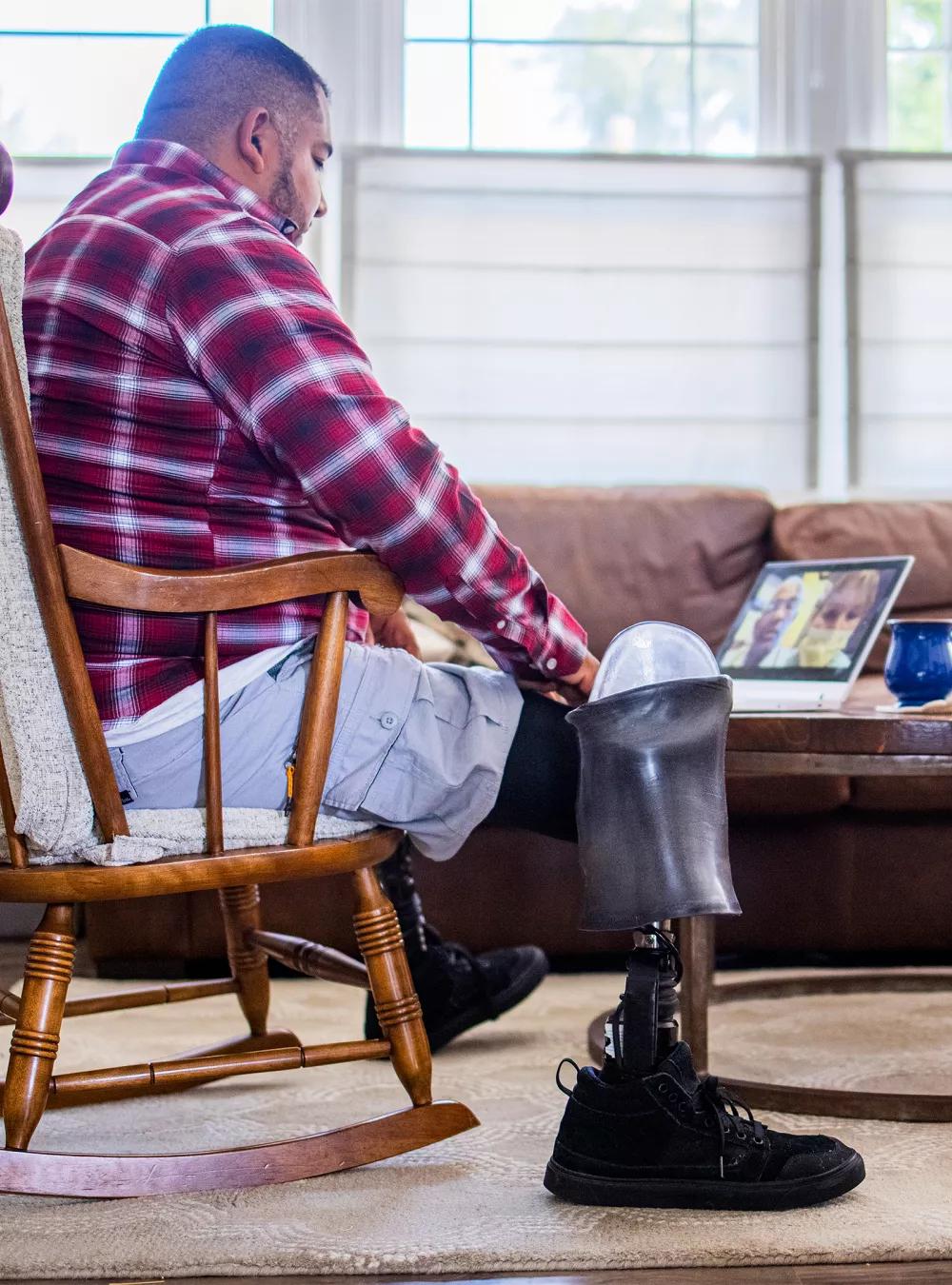From protecting our military during COVID, to improving health outcomes for rural veterans, our remote health monitoring solution serves those who serve. We’re evolving the technology to support the broader public good—in homeland security and other medical applications.

Remote Health Monitoring: Making Healthcare More Accessible for U.S. Veterans
A combat veteran in rural Pennsylvania walks into their local Walmart, sits in front of a computer monitor, and looks into a camera. Within seconds, the system captures their temperature, heart rate, and respiratory rate. They’re now ready for their telehealth appointment.
For veterans across the country, this scenario is becoming reality. And ROSIE—or Remote Optical Screening of Individuals in Entryways—will soon help enable it.
MITRE is developing this remote health-monitoring capability for Department of Veterans Affairs (VA) telehealth services. For those in remote or underserved communities, the capability may prove life-saving.
The VA provides healthcare for nearly 3 million rural veterans. Many live with complex medical conditions like heart disease, diabetes, and combat-related disabilities. These often require continuing access to care.
Getting treatment can mean expensive travel to distant locations. And some veterans may choose not to make the trip. This can exacerbate existing health concerns and further increase costs.
Developed under MITRE’s independent R&D program, ROSIE will play an important part in supporting those veterans—and help make healthcare more accessible and affordable for those who served our nation.
For MITRE’s Kevin Gemp, principal investigator for the effort, that’s a definite motivator.
“The VA is working to ensure veterans with serious medical concerns can readily get quality care,” he says. “Through our efforts to help VA achieve this, I feel I'm contributing in some small way to what these veterans spent years of their life doing.”
Given its high degree of reliability—it measures temperature within 2°F accuracy—ROSIE is on track to become a key component of this initiative. We’re working with startup company Signum Technologies and with the Washington, D.C., VA Medical Center to refine the prototype.
“This technology can help connect veterans to disease screening and treatment at an earlier stage,” Gemp adds. “This can potentially reduce morbidity and mortality—and lower the accompanying healthcare costs to the nation.”
This technology can help connect veterans to treatment earlier, potentially reducing morbidity and mortality—and lowering healthcare costs to the nation.
Pivoting to Meet Myriad Healthcare Challenges
ROSIE has taken a long—and not particularly linear—path to where it now stands.
The journey began with a MITRE-Mayo Clinic collaboration in 2019 to explore using the capability to remotely monitor surgeon health during lengthy surgeries. The idea? The system could collect surgeon vitals and alert medical staff to dehydration and the need for fluids. This could ultimately help reduce errors during surgery.
As with so many things, COVID disrupted that plan.
In early 2020, we pivoted from looking at surgeon health to looking at patient health. For example, we used the technology for contactless temperature screening at MITRE’s main campuses in McLean, Va., and Bedford, Mass.
It also quickly gained the interest of multiple government sponsors, including the Food and Drug Administration, Department of Defense, and Department of Homeland Security.
At the peak of the pandemic, the system stood ready to assist the Transportation Security Administration, should they be required to screen passengers before boarding U.S. aircraft.
The U.S. Army also incorporated the technology around the world to screen soldiers for fevers before they entered a garrison site.
Fast forward two years to the FedTech Homeland Security Startup Studio competition in July 2022, where ROSIE was the first of 10 selected front-runners out of 450 applicants.
The technology now has a clear path to support VA’s telehealth initiatives, including real-time access to care through VA’s Video Connect telehealth platform.
And that’s just a starting point.
“We’re focused on evolving the technology even more so we can transfer and license this intellectual property to benefit the public in various ways,” Gemp says.
For example, remote vital-sign monitoring could substantially improve outcomes in numerous settings. The method could be extended to homeland security efforts (think: airports, border crossings, maritime ports), as well as for broader healthcare applications, such as in clinics and assisted living facilities.
ROSIE’s journey exemplifies our commitment—and unique ability—to work across sectors to develop disruptive technologies to address complex, multidisciplinary challenges.
Dr. Jay Schnitzer, MITRE senior vice president, chief technology officer, chief medical officer, says, “By combining creativity and technical expertise with knowledge of how a solution will be used, we can seamlessly transition capabilities like this to government and industry—and turn ideas into reality.”
To learn more, contact us at research@mitre.org.
Join our diverse community of innovators, learners, knowledge-sharers, and risk takers. View our Job Openings.